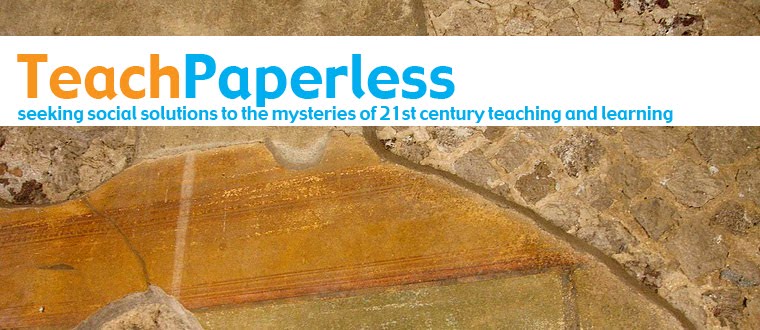I don't think the "teaching naked" idea is completely devoid of merit. It's extreme, yes, but it starts to get at a fundamental transformation of school, even though it's coming from a different place than most tech advocates would prefer.
Since technology now lets us relocate some of what happens in classrooms in space and time, I continue to be fascinated by the idea that everything that happens in a meatspace classroom should be something that can only happen there (or as close to it as we can come). The availability of f2f social interaction is the defining attribute of the meatspace classroom, and only a true ideologue would deny that ubiquitous technology can and does interfere with that at times.
Anyone who is seeking to increase the engagement level for f2f interactions should be supported, even if some of their notions about technology are misguided. We should be working with people like Bowen to show how using technology to shape, share, and take that critical f2f social interaction to someplace new and different that changes the game in compelling ways.
If we can't make that case for him, or we really can't acknowledge the primacy and value of f2f interactions in classrooms, then we should leave the guy alone.
I think this is a great response.
However, I disagree with one major point in it.
I would make the argument that f2f is not in fact always the best (either in 'primacy' or 'value') that we get in education.
There are plenty of times when I was a student talking to an instructor either in class or during office hours (and I'm sure I'm not alone in this) that I felt like I could have better expressed my point and gotten more bang out of my educational buck if I'd been able to -- in the moment -- work out my ideas in text online, in images and videos and multimedia, and in shared collaborative situations in coordination with an online discussion with the prof, rather than just flounder in the physical presence of someone considerably smarter than me.
Likewise, I'd argue that, as a teacher, I've had 'critically' better professional development experiences online via Twitter, Cover it Live, Ustream, and Elluminate than I've ever had f2f with a facilitator who comes in and meets with the faculty once and then disappears.
So, no, I don't think f2f is necessary.
But -- and here's the catch -- online is not necessarily any better.
It's really a matter of what you do with the time you have.
(Yes, I'm quoting Gandalf... I'm sure you have your 'things' as well).
Online and social tech enhanced learning is only as good as the teacher and the quality of the interaction; likewise f2f learning is only as good as the teacher and the quality of the interaction.
My argument against Bowen is that he seems to put the priority of learning on his students having a personal discussion with 'him'. It's about them watching 'his' lectures and PowerPoints before coming to class; it's about them paying attention and taking part in 'his' discussion on 'his' terms during class.
I'm more than willing to facilitate my students' ability to learn in real-time from people and sources beyond my classroom walls. That's a major distinction between 20th and 21st century learning and teaching.








I've taught in traditional f2f classrooms and I've taught online. I am no expert but through my personal experience I believe that blended learning works well. It has the best of both worlds: plenty of interesting resources online, assignments posted online, reading/exploring online and then save the f2f for interaction, discussion, group work, questions - active learning. Makes the best use of our time together.
ReplyDeleteThere is data to support blended approach at www.ed.gov/rschstat/eval/tech/evidence-based-practices/finalreport.pdf